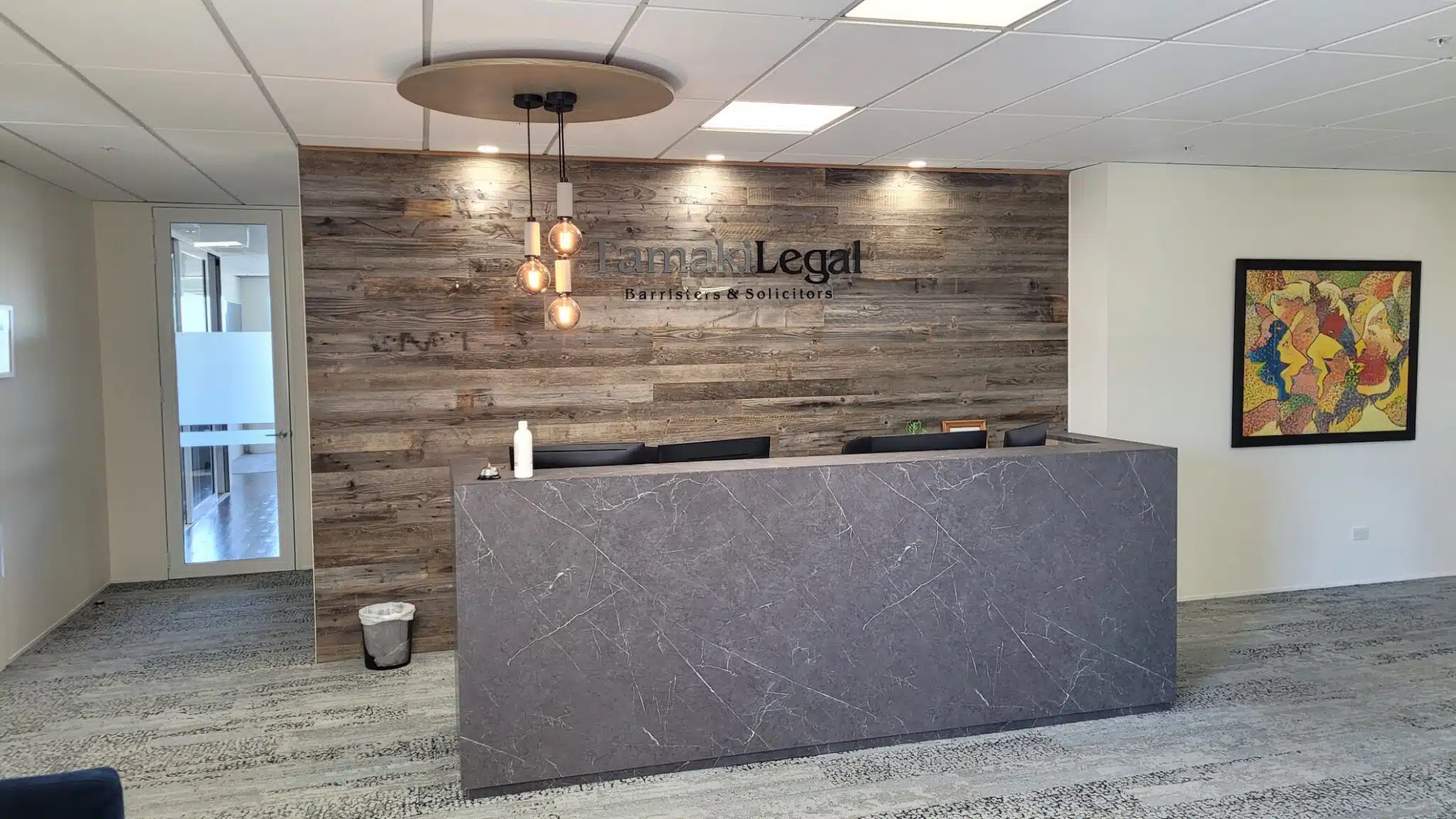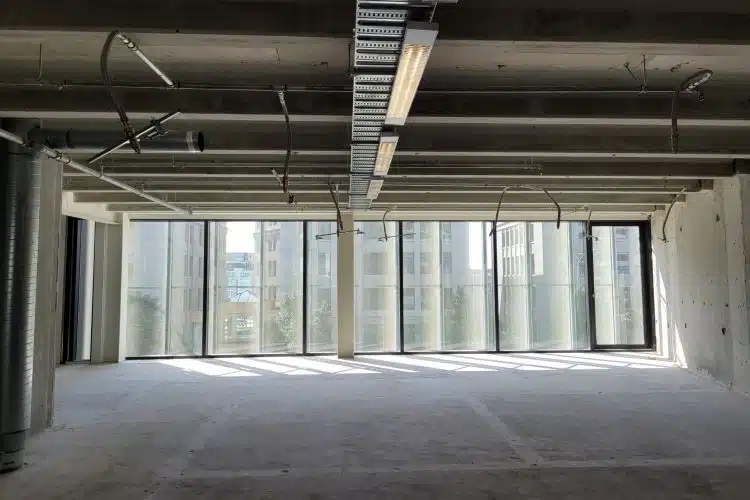
Case Study: The Definitive Guide to Lease Reinstatement
Caci Clinic Auckland - Lease Reinstatement
Case Study No: 14

Lease Reinstatement: A Step by Step Case Study
Caci Clinic Auckland had been at its premises for nine years.
With the reconfiguration of Auckland’s Viaduct and the subsequent change in traffic patterns, the franchisee decided to relocate her business to improve accessibility and visibility.
Withing the typical lease lifecycle, the complexities of lease reinstatement can often be underestimated. What seems like a routine part of lease agreements can quickly become a source of frustration and misunderstanding between tenants and landlords.
In this in-depth case study, we step through the intricate journey of Marcus and Proactive Property Group as they expertly navigated the challenging terrain of lease reinstatement for Caci Clinic Auckland, outlining valuable insights for tenants.
Understanding Lease Reinstatement
Lease reinstatement, in its essence, pertains to the restoration of leased premises to their original state, with the exception of fair wear and tear.
At the commencement of a lease, tenants often customise their premises to suit their business needs.
However, as the lease term comes to an end, the premises must be returned to the condition it was in when the lease began. This process includes the removal of any added installations, such as partitions, racking, heating, ventilation, and air conditioning (HVAC) systems, lighting, signage, and more.
Additionally, the tenant is responsible for patching, plastering, and repainting walls, as well as restoring floors and ceilings to their original state.
Lease agreements can differ significantly, leading to variations in the scope of lease reinstatement. The process itself is influenced by various factors including:
Lease Obligations: Certain leases may have unique clauses that demand extensive reinstatement. For instance, a lease might stipulate a complete repaint internally and externally, along with new carpet installation, leaving no room for fair wear and tear exemptions.
Maintenance During Tenancy: The maintenance and care provided by the tenant during their occupation can influence the complexity and costs of reinstatement. Diligent upkeep might ease the restoration process, while neglect could lead to challenges.
Agreement on Standards: Often, tenants and landlords must agree on the standard to which the premises will be reinstated. This subjectivity can sometimes result in disagreements between the parties.
Lease reinstatement process overview
The lease reinstatement process can be broken down into several key stages. By following these steps, tenants can ensure a smooth and successful reinstatement process.
The first step in the lease reinstatement process is to thoroughly review the lease agreement and understand the specific reinstatement obligations outlined within it.
This includes identifying the scope of reinstatement, any specific requirements for repairs or removal of fixtures, and the timeline for completing the reinstatement.
It is crucial to have a clear understanding of the lease terms and obligations to avoid any potential disputes or misunderstandings later on. If there are any uncertainties or ambiguities in the lease agreement, it is advisable to seek advice to ensure compliance.
Once the lease agreement has been reviewed, the next step is to prepare the premises for reinstatement. This involves conducting a thorough assessment of the premises to identify any damages, alterations, or additions made by the tenant that need to be addressed.
It is important to create a detailed inventory of the premsies current condition and document any existing issues. This documentation will serve as a reference point during the reinstatement process and can help resolve any disputes that may arise.
After assessing the premises, the next step is to remove any fixtures or alterations that need to be taken down. This may include the removal of partitions, built-in furniture, electrical or plumbing fixtures, or any other additions made by the tenant.
Care should be taken during the demolition process to avoid causing any further damage to the premises. It is advisable to engage experienced contractors who specialise in reinstatement works to ensure that the removal is done safely and efficiently.
Once all fixtures and alterations have been removed, the premises will need to be repaired and restored to its original condition. This may involve patching up walls, replacing flooring, repainting, and addressing any other damages or wear and tear.
It is important to engage reliable contractors who have experience in reinstatement works to ensure that the repairs are done to a high standard. Regular inspections should be carried out to monitor the progress and ensure that the reinstatement is on track.
Once the reinstatement works are complete, a thorough inspection of the premises should be conducted to ensure that all reinstatement obligations have been met. This includes checking that all repairs have been done satisfactorily, fixtures have been removed, and the premises are in a clean and functional state.
It is important to document the reinstatement process through photographs, videos, and written reports. This documentation will serve as evidence of compliance with the lease reinstatement obligations and can be useful in case of any disputes or claims.
The final step in the lease reinstatement process is to hand over the reinstated premises to the property manager or landlord. This involves arranging a final inspection with the landlord or their representative to ensure that they are satisfied with the reinstatement works.
It is important to obtain written confirmation from the landlord stating that the premises has been reinstated to their satisfaction. This will help protect the tenant from any future claims or disputes regarding the condition of the premises.
Navigating the Maze: Lease reinstatement actions taken for Caci Clinic Auckland
Marcus and Proactive Property Group were entrusted with the critical task of managing the lease reinstatement of the old Caci Clinic Auckland premises.
In addition to the lease reinstatement they were also tasked with negotiating the lease for the new premises, an intricate process that demanded a careful balance of legal considerations, financial terms, and strategic timing.
One of the key challenges they faced was aligning the lease reinstatement with the impending lease expiry deadline and the new premises’ fit-out completion. This challenge is familiar to many property professionals—the race against time to complete necessary work before the lease term concludes.
The initial step for Marcus and the team was to define the scope of the defit work and the required lease reinstatement.
Interestingly, the lease lacked a Premises Condition Report, which would typically outline the state of the premises at lease commencement. This absence led them to delve into building records to establish the baseline configuration of the premises.
In tandem with determining the extent of the tenant’s fitout, they meticulously defined the defit scope. By considering the tenant’s alterations and aligning them with the lease reinstatement requirements, they ensured a comprehensive and tailored approach.
The scope determination process revealed another layer of complexity: compliance with building codes and regulations. It was crucial to assess whether the scope of the defit work and reinstatement necessitated a building consent or if a consent exemption could be justified.
For instance, the existing fitout included a dropped ceiling and additional installations for fire alarms and sprinkler systems. Marcus and the team engaged a fire engineer to ascertain whether reinstating the sprinkler systems would require building consent or if notification to the local council would suffice. The outcome hinged on the intricate balance between legal requirements, safety standards, and practical considerations.
The resolution of this compliance challenge underscored an important lesson—the necessity of proactive communication.
Throughout the planning and scoping phases of the defit and reinstatement work, Marcus and Proactive Property Group actively engaged with the landlord’s property manager. This collaborative approach ensured that the scope of work, timelines, and expectations were transparent and aligned between both parties.
Simultaneous Strategies: Lease Negotiation and Covid-19 Impact
As the lease reinstatement plan took shape, Marcus and his team embarked on another crucial task—negotiating the commercial terms for the lease of new premises in the Viaduct for Caci Clinic Auckland. This multifaceted process involved carefully reviewing the draft Agreement to Lease, negotiating its terms, and seamlessly coordinating its execution.
However, the journey was not without its challenges. The advent of the Covid-19 pandemic brought unprecedented disruptions, impacting not only the new clinic’s building consent process but also its subsequent fit-out.
In response, Marcus and Proactive Property Group adeptly negotiated lease extensions for the existing premises. This lease extension allowed Caci Clinic Auckland to transition smoothly from the current premises to the new location, minimising client disruption and downtime.
Additionally, the lease extension created a lease reinstatement window before the original lease expiry.
Precision in Execution: Reinstating the Old Premises
With the relocation of the clinic successfully orchestrated, the attention turned to reinstating the old premises to its original state. The defit process involved the removal of various elements, including partitions, flooring, ceiling, HVAC systems, plumbing, and electrical fit-outs.
Moreover, intricate systems such as fire alarms and sprinklers were reconfigured back to their base build configuration, ensuring adherence to safety regulations.
The lighting was reinstated to specific lux levels, while any construction-induced damage to the base build walls was meticulously repaired.
The meticulousness extended to the final stages. Organising comprehensive inspections with the landlord’s property manager ensured that every aspect of the premises aligned with the reinstatement standards. Only after the premises received the stamp of approval from all parties involved was it formally handed back to the landlord on lease expiry. This detail-oriented approach exemplified the commitment to ensuring that the restoration met stringent standards and expectations.
Finally, we recovered the lease bond from the landlord.
The Client Outcome
Lease reinstatement can be stressful, time consuming and costly.
However, for Louise Donaldson, the Caci franchisee, the journey was one of streamlined transition and focused dedication. Proactive Property Group delivered on their promises, achieving several critical objectives:
Cost-Effective Defit and Lease Reinstatement: Through meticulous planning and effective execution, Marcus and his team managed to navigate the complexities of lease reinstatement while ensuring cost-effectiveness.
Seamless Transition: The transition from the old premises to the new premises was characterised by its seamless nature. This was made possible by careful coordination of lease extensions, fit-out timelines, and the defit process.
Frictionless Handover: The careful restoration of the old premises to its original condition resulted in a smooth and frictionless handover. This not only showcased the standards upheld by Proactive Property Group but also minimised disagreements regarding the reinstatement standard.
Client Testimonial
“Marcus saved us time and money by coordinating the premises defit and lease reinstatement with the opening of our new premises.
He was very effective at managing our landlord’s lease reinstatement expectations and negotiating lease extensions to adjust to our revised new premises fitout schedule while managing our lease costs.
Marcus provided practical advice and solutions to ensure that our premise defit and lease reinstatement risks were mitigated quickly whilst project managing contractors and consultants to deliver to schedule.
I would definitely recommend Marcus to anyone that engages his services and will definitely make use of Marcus’s services in future.”
Louise Donaldson
Franchisee
Caci Clinic Wynyard Quarter
Share this case study to:

